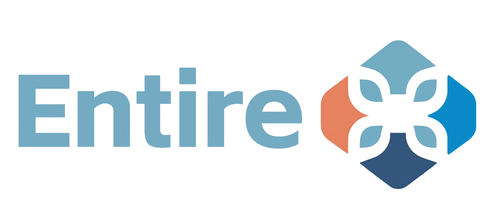Baby Mattresses & Pillows (HS 9404) Tariffs: Nursery Bedding Guide

The 2025 US tariffs on Chinese imports will impact a range of bedding and similar articles under HS Code 9404. For the Toys & Baby Products sector, this is highly relevant for items such as crib mattresses, playard mattresses, changing pad contours, nursing pillows, and infant loungers. Executives at brands like Graco, Sealy Baby, Delta Children, Naturepedic, and Boppy must assess the implications. Sourcing these products, particularly those involving foam (polyurethane, memory foam), fiberfill (polyester), organic cotton, and specialized waterproof or breathable fabrics, often involves Chinese manufacturing. Key concerns include adherence to stringent US flammability standards (16 CFR Parts 1632 and 1633 for mattresses), chemical safety (CPSIA for lead/phthalates, CertiPUR-US® for foam, GOTS/OEKO-TEX® for textiles), and finding viable alternatives that can meet these rigorous requirements.
- 1. Nursery Nerves: How Dependent is the US on China for Baby Bedding (HS 9404)?
- 2. Beyond China's Cribs: Where are Alternative Hubs for Compliant Baby Mattresses & Pillows?
- 3. The Price of Peace of Mind: Costing Certified Mattresses & Organic Pillows (US/Mexico vs. China)?
- 4. Dreaming of USMCA: Can Mexican/Canadian Crib Mattress Production Qualify?
- 5. Compressed Comfort vs. Regional Rush: Logistics of Baby Bedding from Afar vs. Nearshore?
- 6. Sleep Safe, Sleep Sound: Navigating Flammability, Chemical & Labeling Rules for Baby Bedding?
- 7. Material Realities: Are There Supply Chain Snags for Certified Foams, Organic Fabrics, or FR Solutions in Baby Bedding?
1. Nursery Nerves: How Dependent is the US on China for Baby Bedding (HS 9404)?
How reliant is the US market on China for HS 9404 baby bedding items like Graco foam crib mattresses, Safety 1st dual-sided mattresses, Sealy Baby organic cotton mattresses, or Boppy nursing pillows and infant loungers?
While there is significant domestic US production of mattresses, China still plays a role, particularly for certain price points, components, or specific finished goods in the baby bedding category. Reliance varies:
* Crib Mattresses (Foam & Innerspring): A notable portion, perhaps 25-45%, of imported crib mattresses or their core components (e.g., some foam cores, fabric covers, or even assembled innerspring units before final covering in the US) may originate from China. Brands like Graco, Delta Children, and some private label mattresses often leverage Chinese manufacturing for cost-effectiveness.
* Nursing Pillows & Infant Loungers (e.g., Boppy, DockATot - some components/alternatives): China supplies a significant share of these textile-based, filled products, estimated at 40-60%, due to its fabric sourcing and sewing capabilities. Even if filled/finished elsewhere, the outer shells or internal fiberfill might be Chinese.
* Organic Options (e.g., Naturepedic - largely US-made, but general organic textile components): While premium organic brands often emphasize US manufacturing, some components like GOTS-certified organic cotton fabric or latex might be globally sourced, with China being a large textile producer.
2. Beyond China's Cribs: Where are Alternative Hubs for Compliant Baby Mattresses & Pillows?
Beyond China, for items like Newton Baby breathable mattresses or My Brest Friend nursing pillows, are there reliable alternative manufacturing hubs in the US, Canada, Mexico, or Europe (textile/foam processing countries) capable of meeting strict 16 CFR 1632/1633 flammability standards and CertiPUR-US® (foam) or GOTS (organic textile) certifications?
Yes, strong alternatives, especially domestic, exist:
* United States: The US has a robust mattress manufacturing industry, with many companies producing crib mattresses domestically to meet 16 CFR Parts 1632 (Standard for the Flammability of Mattresses and Mattress Pads) and 1633 (Standard for the Flammability (Open Flame) of Mattress Sets). Many US foam pourers are CertiPUR-US® certified, and GOTS-certified textile production is also present. Brands like Naturepedic and Newton Baby highlight US manufacturing.
* Canada & Mexico: Both countries have capabilities in foam processing, textile sewing, and mattress assembly. They can be viable nearshoring options, especially for brands looking to leverage USMCA. Adherence to US flammability and chemical standards requires diligent supplier selection and testing.
* Europe (e.g., Portugal, Poland, Turkey for textiles/sewing; Germany for some specialty foams): European countries can offer high-quality production, often aligned with OEKO-TEX® standards for textiles and strict EU chemical regulations (REACH). Costs can be higher, but quality and compliance are generally strong.
3. The Price of Peace of Mind: Costing Certified Mattresses & Organic Pillows (US/Mexico vs. China)?
What are the unit cost differences when sourcing CertiPUR-US® foam crib mattresses domestically (US) or producing GOTS organic cotton nursing pillows in Mexico, compared to similar Chinese products (considering core materials like high-density PU foam vs. standard, organic cotton vs. conventional, stitching quality, and flammability solutions like inherent FR fibers vs. chemical treatments)?
- CertiPUR-US® Foam Crib Mattresses (US-made vs. China): US-made mattresses using certified foam are likely to be +20% to +50% more expensive than a basic Chinese-made foam mattress not meeting the same certifications. If comparing a Chinese mattress also claiming CertiPUR-US® equivalent foam (requires verification), the US option might be +10% to +25% higher due to labor, regulatory overhead, and domestic material costs. Inherent FR solutions (e.g., FR rayon wrap over foam core) are preferred over chemical treatments and add cost.
- GOTS Organic Cotton Nursing Pillows (Mexico vs. China): Mexican production using GOTS-certified fabric and fill could be +15% to +30% more than a comparable Chinese product using conventional cotton/polyester. The premium for certified organic materials and ethical production is a major factor. Stitching quality and zipper durability are also important.
4. Dreaming of USMCA: Can Mexican/Canadian Crib Mattress Production Qualify?
For manufacturing crib mattresses in Mexico or Canada, can USMCA origin rules be met? What are the requirements for imported foam cores (e.g., cut PU foam blocks), innerspring units, or outer fabrics (e.g., waterproof, FR-treated knits)?
USMCA origin for HS 9404 mattresses usually involves significant transformation:
* Tariff Shift & RVC: For mattresses, the rules often require that the assembly of the mattress, including combining the core (foam or innerspring) with cushioning layers and the outer ticking/cover, occurs in North America. There might also be RVC requirements, meaning a certain percentage of the mattress's value must be North American.
* Imported Components: If pre-assembled innerspring units or fully formed foam cores are imported from outside North America, they must be substantially transformed (e.g., by adding significant North American quilting, upholstery layers, and the cover) to qualify. Simply covering an imported core may not be enough. Sourcing foam poured in North America or springs made in North America significantly helps meet origin rules.
5. Compressed Comfort vs. Regional Rush: Logistics of Baby Bedding from Afar vs. Nearshore?
How do logistics differ when transporting compressed roll-packed crib mattresses or individually packaged nursing pillows from China/Vietnam to the US, versus smaller regional distribution center orders, in terms of logistics costs, warehouse space (advantage of compressed packaging), and risk of product damage (e.g., recovery issues after compression)?
- Container Shipping (Compressed/Boxed, China/Vietnam to US): Roll-packing mattresses significantly reduces shipping volume, lowering freight costs per unit. However, it requires machinery for compression and specialized packaging. Risk of foam not recovering fully if compressed for too long or if low-quality foam is used. Nursing pillows are less dense but still benefit from some compression. Transit times of 30-50 days. Requires managing inventory of potentially bulky items even if initially compressed.
- Regional DC Orders (Often for US-made or near-shored goods): Shorter lead times. Mattresses may be shipped flat or lightly compressed, requiring more warehouse space per unit but reducing recovery concerns. Easier to manage just-in-time inventory for diverse SKUs (sizes, firmness levels).
6. Sleep Safe, Sleep Sound: Navigating Flammability, Chemical & Labeling Rules for Baby Bedding?
When importing baby mattresses and pillow-like products, beyond mandatory 16 CFR 1632 & 1633 flammability standards, what specific requirements for safe infant sleep (AAP firmness recommendations for SIDS risk reduction), chemical safety (CPSIA lead/phthalates, CertiPUR-US® for VOCs in foam, OEKO-TEX® for textiles), and labeling (Uniform Law Label) need attention?
A multi-layered approach to safety is essential:
* Safe Sleep Environment (AAP Recommendations): Crib mattresses must be firm, flat, and fit snugly within the crib (no gaps > two fingers) to reduce SIDS risks. Soft bedding, including most pillows and soft loungers, is not recommended for unsupervised infant sleep.
* Chemical Safety:
* CPSIA: Compliance with limits on lead and banned phthalates in all accessible components.
* CertiPUR-US® (for polyurethane foam): Certifies foam is made without ozone depleters, PBDEs/TDCPP/TCEP flame retardants, mercury, lead, other heavy metals, formaldehyde, and is low VOC (Volatile Organic Compound) emissions for indoor air quality (less than 0.5 parts per million).
* GOTS (Global Organic Textile Standard) / OEKO-TEX® Standard 100 (for textiles): Ensure fabrics and fills are free from harmful substances. OEKO-TEX® tests for numerous harmful chemicals.
* Waterproofness & Breathability: Covers are often waterproof to protect the core, but some also aim for breathability to reduce overheating. Ensure waterproofing materials (e.g., TPU) are safe and don't off-gas.
* Uniform Law Label: Mattresses sold in the US require a law label specifying the filling materials, manufacturer information, etc., as per state regulations.
* Choking/Suffocation Hazards: For nursing pillows or loungers, ensure no small parts that can detach, and clear warnings against use for unsupervised sleep due to suffocation risk.
7. Material Realities: Are There Supply Chain Snags for Certified Foams, Organic Fabrics, or FR Solutions in Baby Bedding?
Are there supply chain vulnerabilities for high-density CertiPUR-US® polyurethane foam, GOTS/OEKO-TEX® certified organic cotton or bamboo fabrics, inherent FR fibers (e.g., modacrylic for mattress socks), or safe waterproof breathable films (TPU), due to limited suppliers, high certification costs, or specialized sewing/quilting techniques?
Yes, vulnerabilities exist:
* CertiPUR-US® Certified Foam: While many US foamers are certified, global supply of foam meeting these criteria, especially at competitive prices for baby products, can be more limited. Consistent quality is key.
* GOTS/OEKO-TEX® Certified Textiles: Organic cotton and other eco-friendly fabrics have longer lead times and higher costs. Maintaining chain-of-custody for GOTS is complex. Availability of specific weaves or prints can be a challenge.
* Inherent FR Solutions: Using FR fibers in a mattress sock or barrier cloth to meet 16 CFR 1633 without chemical FR treatments is preferred but more expensive than older, now often restricted, chemical FRs. Supply of these specialized FR fibers (e.g., certain rayons, modacrylics, silica-based fabrics) can be concentrated.
* TPU Films for Waterproofing: Ensuring the TPU (Thermoplastic Polyurethane) film is food-grade, phthalate-free, and quietly laminated (non-crinkly) requires good suppliers.
* Specialized Machinery: Quilting machines for mattress covers, tape-edge machines for closing mattresses, and specialized sewing for shaped pillows require capital investment and skilled operators.
* Certification Costs & Audits: Maintaining certifications like GOTS, CertiPUR-US®, and OEKO-TEX® involves ongoing costs for testing and audits, which adds to the product price.
Disclaimer: The information provided in this article is for general informational purposes only and does not constitute financial, legal, or specific sourcing advice. Market conditions are highly dynamic and specific advice should be sought from qualified professionals.




